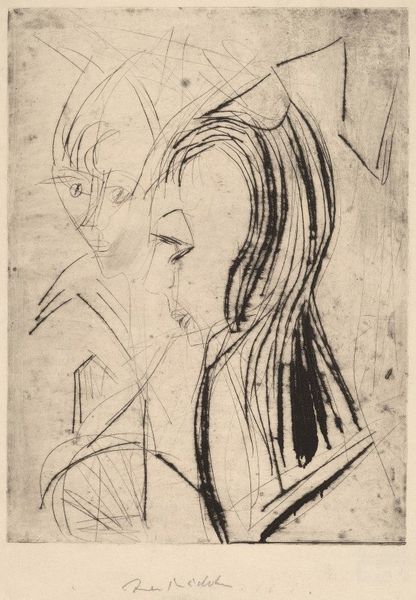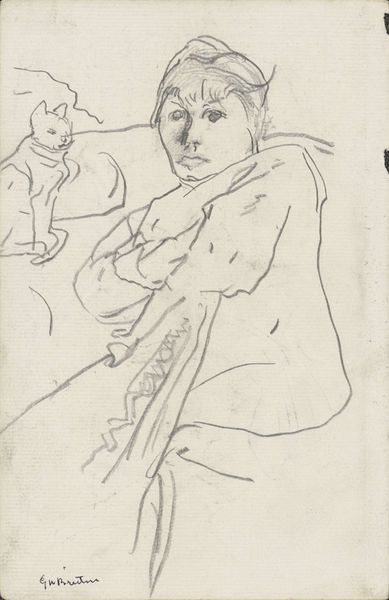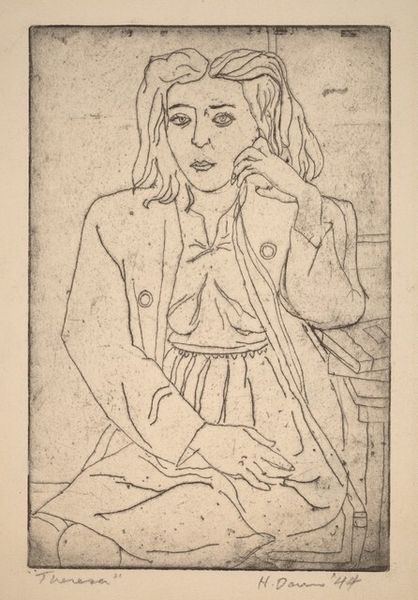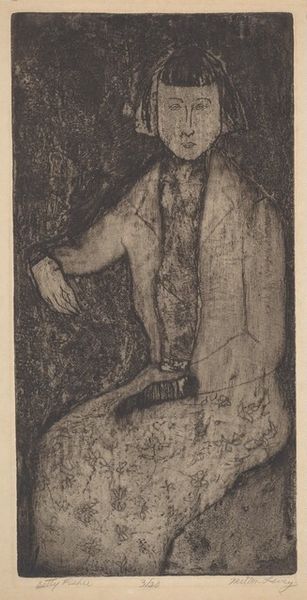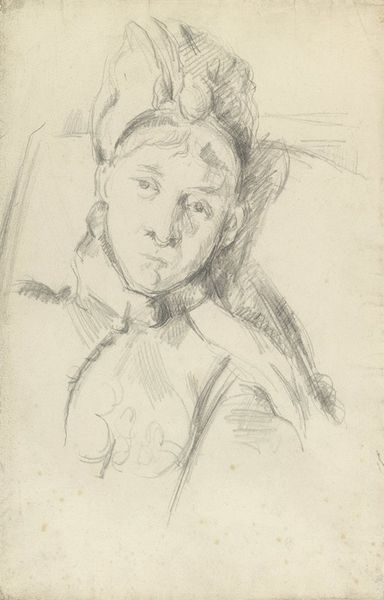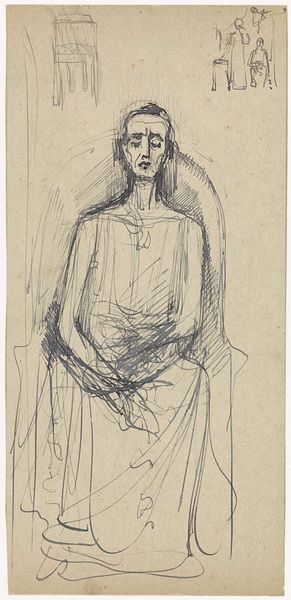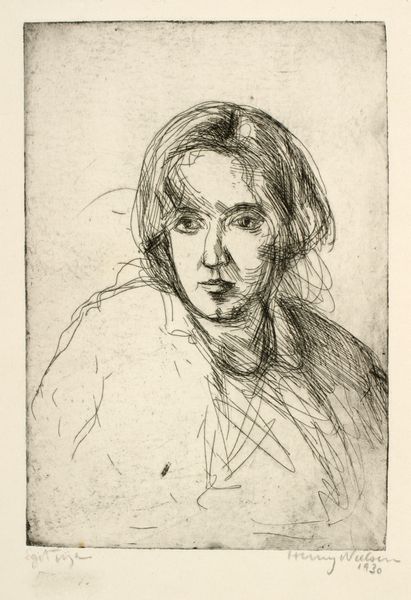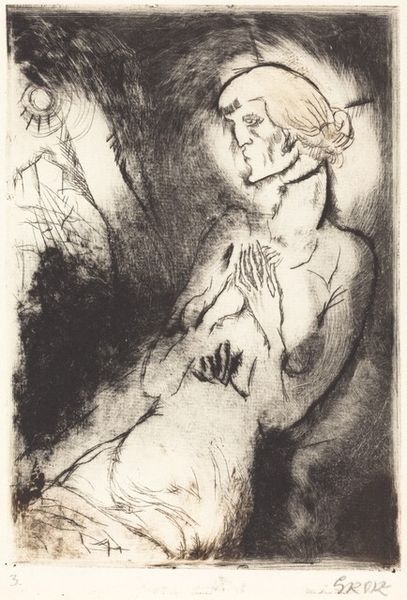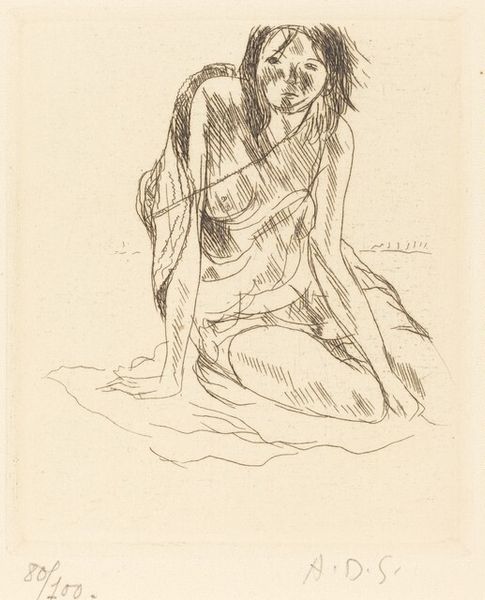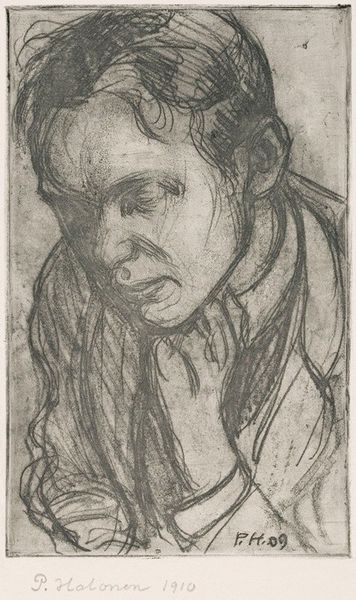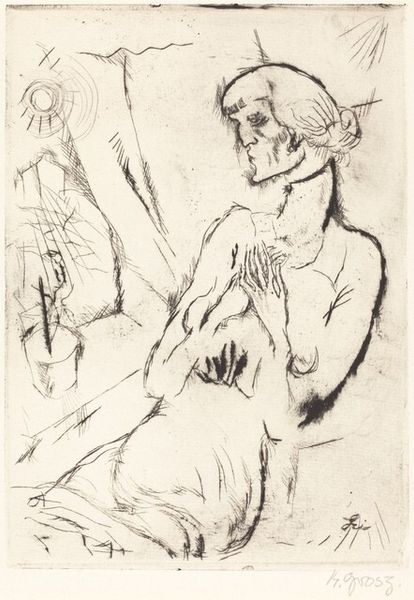
drawing, print, ink
#
portrait
#
drawing
# print
#
pen sketch
#
pencil sketch
#
german-expressionism
#
figuration
#
ink
#
expressionism
Dimensions: sheet: 40.64 × 34.77 cm (16 × 13 11/16 in.) image: 19.37 × 15.72 cm (7 5/8 × 6 3/16 in.)
Copyright: National Gallery of Art: CC0 1.0
Curator: This drawing, executed in ink, is entitled “Conversation” by Erich Heckel from 1919. At first sight, it exudes a somewhat somber atmosphere, doesn’t it? Editor: Indeed, the heavy use of dark inks and sharp lines seems to invoke feelings of tension. However, the very choice of rendering figuration and intimacy is indicative of a transformative historical turn: Expressionists like Heckel actively moved to foreground individuals’ experiences and inner turmoil emerging as crucial subjects after the war. Curator: Absolutely. Consider how Heckel renders the subjects, paying careful attention to form; the elongation of facial features, in tandem with the figure's placement with hands clasped behind the head, almost seems to disfigure and evoke introspection. What purpose does that distortion serve? Editor: Perhaps the physical disfigurement is meant to mirror an emotional or societal one. After all, it was created in 1919 during a time of immense social and political unrest in Germany. Print became increasingly popular at this time, becoming a critical, accessible and portable form of artmaking used by artists. Curator: Let's unpack the medium. The work seems to oscillate between pen sketch and an etched print—the texture resembles that of both. How does it further express the internal torment within the depicted scene? Editor: By employing graphic techniques such as this, the stark contrast achieved through the marks serves to intensify the emotionality conveyed within Expressionist idioms. Furthermore, Expressionists deliberately utilized “primitive” techniques like woodcuts for printmaking in order to revive cultural traditions, while creating more relatable and authentic art for the working classes of the era. Curator: Well, seeing how both formal elements like line and figuration coincide with cultural historical moments to yield complex representations here certainly offers many layers to contemplate! Editor: Indeed, I found that reflecting upon those historical cross currents enabled deeper insight into grasping their affective states alongside his masterful usage of expressive visual form.
Comments
No comments
Be the first to comment and join the conversation on the ultimate creative platform.
